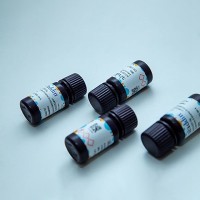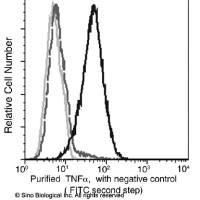We describe a new method for quantitative tissue proteomics using culture-derived isotope tags (CDIT), which are cells grown
in stable isotope-enriched medium and added to each tissue sample to provide internal standards. After protein identification
by mass spectrometry (MS), each peak derived from tissue protein is quantified relative to the corresponding CDIT peak. The
amounts of each peak in different tissue samples can be compared relative to CDIT. Even if the corresponding peak from CDIT
can not be detected, a peak with a similar scan number, but different sequence on liquid chromatography (LC)-MS, can be used
to obtain semiquantitative values. Absolute quantification is possible by determining the protein amount in CDIT in advance
using unlabeled synthetic peptides; this is less costly than other methods, such as AQUA.
For identification of specific components in a protein complex, target proteins are enriched or isolated by affinity techniques
using bait-conjugated matrix, but many non-specific binders are often found. Stable isotope labeling strategies have proven
particularly advantageous for the discrimination of proteins specifically associated with the target population from nonspecifically,
copurified contaminants. We also describe a protocol for efficient in-gel digestion and high-performance nano-LC column preparation,
which makes it possible to quantify larger numbers of proteins.






